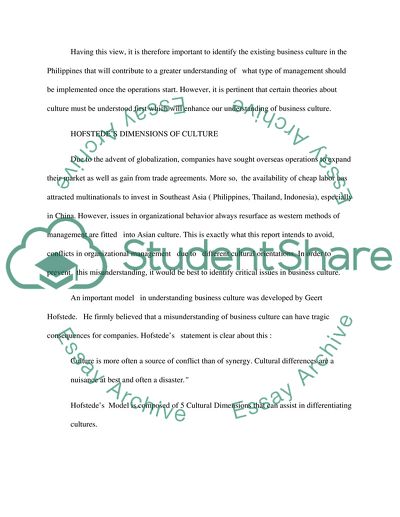Cite this document
(Business Cultures of Japan and The Philippines Research Paper, n.d.)
Business Cultures of Japan and The Philippines Research Paper. Retrieved from https://studentshare.org/culture/1722274-report-carry-out-a-comparative-analysis-of-two-countries-and-their-business-cultures-based-on-the-information-below
Business Cultures of Japan and The Philippines Research Paper. Retrieved from https://studentshare.org/culture/1722274-report-carry-out-a-comparative-analysis-of-two-countries-and-their-business-cultures-based-on-the-information-below
(Business Cultures of Japan and The Philippines Research Paper)
Business Cultures of Japan and The Philippines Research Paper. https://studentshare.org/culture/1722274-report-carry-out-a-comparative-analysis-of-two-countries-and-their-business-cultures-based-on-the-information-below.
Business Cultures of Japan and The Philippines Research Paper. https://studentshare.org/culture/1722274-report-carry-out-a-comparative-analysis-of-two-countries-and-their-business-cultures-based-on-the-information-below.
“Business Cultures of Japan and The Philippines Research Paper”, n.d. https://studentshare.org/culture/1722274-report-carry-out-a-comparative-analysis-of-two-countries-and-their-business-cultures-based-on-the-information-below.


